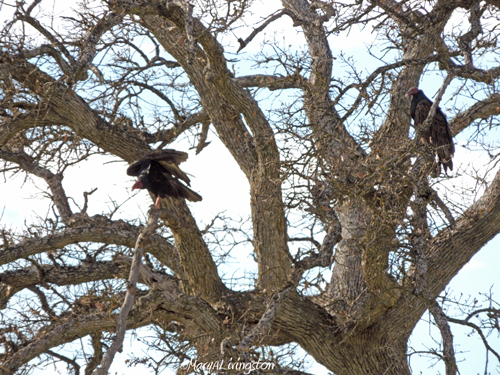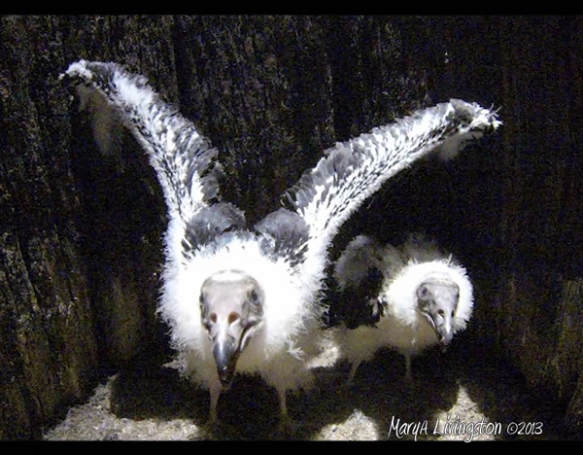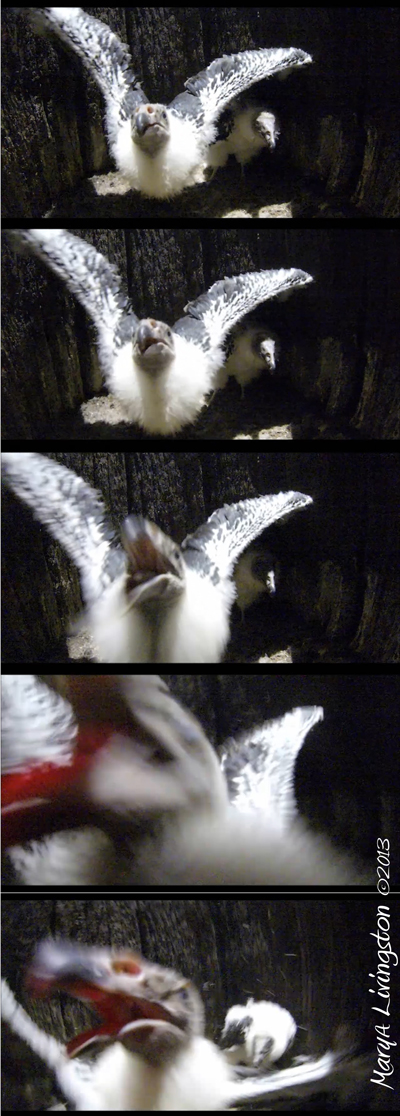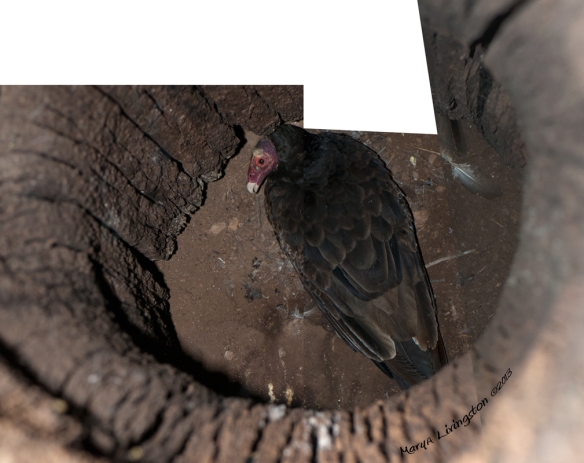
The pair of vultures in the nest tree. Turkey vultures live in our area year round. In February, a pair claims the nest. I don’t know if it is the same pair each year.
I went out into our backyard to get some reference photos of lighting on the trees. Just as I raised the camera to my eye, I hear an odd squeaky grunt from the west. I did not recognize the creature making such a sound. It did not sound like the call of a bird, nor did it sound like a critter on the ground. Quickly, I lowered the camera for a look.
I saw two turkey vultures tangled in a mating embrace in the nest tree just south of the big pond. I switched the camera to video to catch the moment and only managed to get the afterglow fluff of feathers.
Turkey vultures are very secretive. We lived here for almost ten years before we realized they were nesting in the hollow of an oak tree just south of the big pond. Even more years before we saw the nesting pairs enter and leave the nest.
The hollow of the tree extends fourteen feet to ground level. By the time the chicks can climb out, they are old enough to fly.
The next day, I watched from the workroom for the vultures to return to the tree. I hoped to catch them. Then they came, one after the other into the tree. I turned off the equipment and rushed out. I don’t usually take a rushed break in the middle of the work day, but I was on a mission.
I slipped around a tree to the southeast of their location and waited. The vultures, the aware bird that they are, already spotted me and were staring in my direction. Then they flew overhead and if they had voice boxes, I am sure they would have sounded a laugh.
So it begins, the nesting of the turkey vultures in our backyard. I will keep you posted.
As for me, I returned to work a little more productive after sneaking a little bliss.

Hollow oak tree. The vultures nest in the cavity every year. The entrance is 14 feet off the ground. to give you size perspective, I am 5’9″ tall.

A shot into the cavity of the tree where the turkey vultures raise their young.















